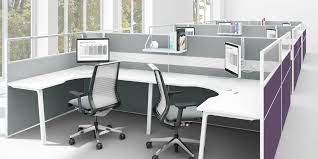Introduction
In today’s fast-paced business environment, creating a productive and efficient workspace is crucial for success. One of the key aspects that often goes unnoticed but significantly impacts workplace productivity and employee well-being is the furniture used in offices and commercial spaces. To ensure the quality and safety of office furniture, the ANSI/BIFMA X5.9 Standard plays a pivotal role. This comprehensive guide aims to explore the significance of this standard, its implications on office furniture manufacturing, and how it can positively impact your workspace.
What is ANSI/BIFMA X5.9?
The ANSI/BIFMA X5.9 Standard is a set of guidelines and testing procedures developed by the American National Standards Institute (ANSI) and the Business and Institutional Furniture Manufacturers Association (BIFMA). Its primary objective is to establish safety, durability, and performance requirements for office furniture, including chairs, desks, tables, and storage units. Compliance with this standard ensures that office furniture is manufactured to meet specific quality and performance benchmarks, guaranteeing a safe and efficient workspace for employees.
Ensuring Safety and Durability
Safety should always be a top priority when it comes to office furniture. ANSI/BIFMA X5.9 sets forth rigorous testing methods to evaluate the structural integrity and durability of office furniture. This includes evaluating the load-bearing capacity of chairs and desks, stability testing, and assessing the resistance to wear and tear. By adhering to these standards, furniture manufacturers can produce products that withstand the rigors of daily use, reducing the risk of accidents and injuries in the workplace.
Enhancing Ergonomics
Ergonomics is a crucial aspect of office furniture design. Properly designed furniture promotes healthy postures and reduces the risk of musculoskeletal disorders. ANSI/BIFMA X5.9 emphasizes ergonomic considerations during the design and manufacturing process, ensuring that chairs, desks, and other office items support the natural movements and comfort of users. Ergonomically designed furniture not only boosts productivity but also enhances employee well-being and satisfaction.
Sustainable Manufacturing Practices
In recent years, there has been a growing emphasis on sustainability and environmental responsibility in all industries, including office furniture manufacturing. ANSI/BIFMA X5.9 incorporates sustainability measures that encourage manufacturers to adopt eco-friendly practices in their operations. This includes the use of recycled materials, reducing energy consumption, and implementing responsible waste management techniques. By choosing furniture that complies with this standard, businesses can contribute to a greener future while maintaining a high standard of quality.
Meeting Industry Standards and Regulations
In today’s competitive marketplace, businesses must ensure that they meet industry standards and regulations. ANSI/BIFMA X5.9 compliance is an essential criterion for businesses looking to stand out as reputable and reliable entities. It demonstrates a commitment to producing high-quality furniture that meets recognized industry benchmarks. Furthermore, companies that use ANSI/BIFMA X5.9-compliant furniture can assure their clients and customers of the safety and durability of their products.
The Impact on Employee Productivity
Investing in ANSI/BIFMA X5.9-compliant furniture can have a profound impact on employee productivity. Comfortable and ergonomically designed workstations reduce the risk of discomfort and fatigue, enabling employees to focus better on their tasks. Properly designed chairs, for instance, offer lumbar support and encourage proper posture, reducing the strain on employees’ backs during long hours of sitting. Such considerations can lead to increased job satisfaction and efficiency, ultimately benefiting the organization’s bottom line.
Cost-Effectiveness in the Long Run
While it’s true that ANSI/BIFMA X5.9-compliant furniture may have a slightly higher upfront cost, it proves to be cost-effective in the long run. Furniture that meets these stringent standards is more durable and less prone to wear and tear, reducing the need for frequent replacements. Additionally, the positive impact on employee productivity can lead to higher output and lower absenteeism, further contributing to cost savings.
Understanding ANSI/BIFMA X5.9 Certification
To ensure that you are purchasing furniture that adheres to the ANSI/BIFMA X5.9 Standard, look for products that come with proper certification labels or markings. These certifications indicate that the furniture has undergone rigorous testing and meets the required quality benchmarks. Additionally, it’s essential to source furniture from reputable manufacturers who prioritize compliance with industry standards.
Conclusion
In conclusion, understanding the impact of the ANSI/BIFMA X5.9 Standard is essential for creating a safe, productive, and comfortable workspace. This comprehensive set of guidelines and testing procedures ensures that office furniture meets strict safety, durability, and ergonomic requirements. By investing in ANSI/BIFMA X5.9-compliant furniture, businesses can demonstrate their commitment to quality, sustainability, and employee well-being. The long-term benefits of such an investment include increased productivity, cost-effectiveness, and compliance with industry regulations. So, when designing or updating your workspace, remember to prioritize ANSI/BIFMA X5.9-compliant furniture for a successful and efficient working environment.








